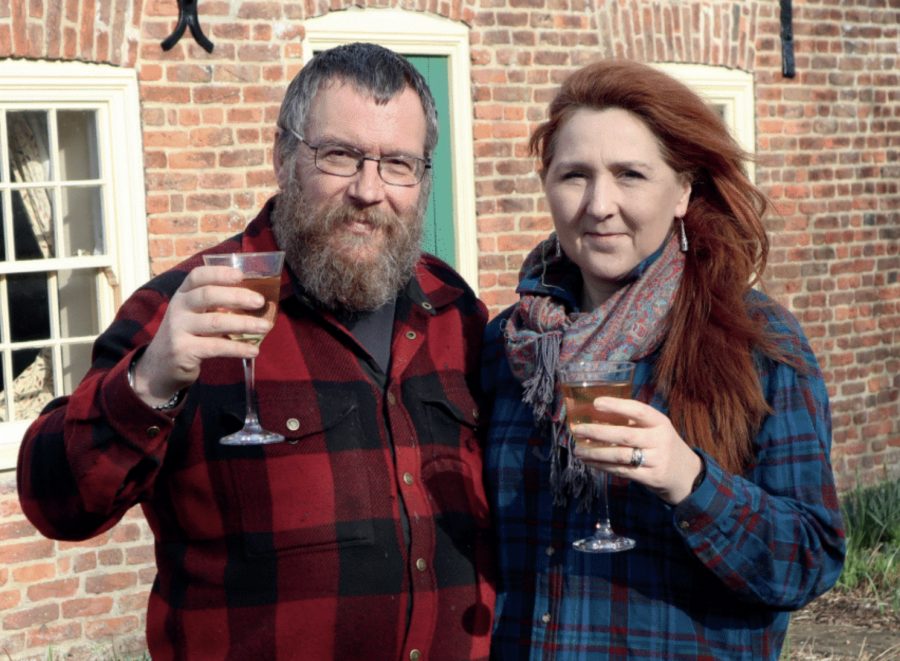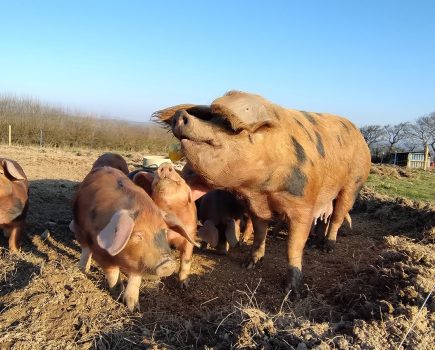In this article extract taken from the April issue of The Country Smallholder magazine, Fiona and Hugh Osborne say you too can capture the flavour of spring by making this distinctive wine.
I recall years ago being told by a terribly self-important man that “only grape makes proper wine, everything else is foul”. I felt pity for a person with such a limited palate. We don’t apply such arbitrary and limiting strictures to spirits. Barley, apples, plums, potatoes, juniper all make interesting and varied spirits. Wines can enjoy the same diversity and variety of ingredients, and all be delicious. It’s undeniable that bad “homebrew” can be awful but with some simple techniques and widely available ingredients, country wines can be a taste sensation! I loveElderflower wine. This recipe never fails me and with elderflower season looming, I will soon be making this year’s batch.
GATHERING ELDERFLOWERS
Elderflowers are reassuringly distinctive – clusters of tiny white star like flowers on a scrubby fairly small tree. The leaves are in alternating green pairs of leaflets five or more in number with a single end leaflet.I gather half a basket (about a bucket full) of stems for each 1-gallon batch of wine.
There’s an old country saying that they should be gathered in the morning. Recently I found a Kew gardens report on elderflowers that observed that “the floral scent complex peaked between midnight and dawn”.
So that old country saying is absolutely right! These days I collect my elderflowers in the early morning which maximises the heady aroma. I pick only fully open bright white flowers, leaving any that are turning brown (as well asa good proportion of the rest for the pollinating thrips).We are lucky enough to have plenty of elder trees on our property, so we don’t have to forage for wild elderflower, but we certainly did in previous homes.
It’s reassuring to note that this is quite legal in Britain; it’s not legal to uproot wild plants but foraging for the Four Fs (flowers, fruit, foliage & fungi) is fine. The law states that“A person who picks mushrooms growing wild on any land, or who picks flowers, fruit or foliage from a plant growing wild on any land, does not (although not in possession of the land) steal what he picks, unless he does it for reward or for sale or other commercial purpose.”
This applies to England and Wales but I understand that Scotland has similar provision. I always harvest away from roads because of dust and fumes and above leg cocking height for dogs!
PREPARING A WINE MUST
Before starting on the ingredients, I sterilise a brewing bucket (available from all homebrew shops). There are many ways of doing this but mine is simple. I add about an eggcup full of plain, unscented, household bleach to the bucket and fill it with water. I leave this for 20 minutes and then rinse it well, twice.
To prepare the elderflowers I snip the tiny flowers from the stalks into a jug. I aim for about 500ml of loosely packed elderflowers for each gallon batch of wine and put these into the brewing bucket. To this I add 100g of chopped raisins, because flower wines often lack body (known in posh circles as “vinosity”). Adding the raisins gives the mouth feel that the perfumed flavour of flowers lacks.
Next comes the juice and grated rind of an unwaxed lemon (if I can’t find them, I just scrub a waxed lemon under the tap). The lemon gives a sharp flavour note from the juice and a sour one from the rind adding more dimensions to the wine. The lemon juice also increases acidity which the yeast prefers, leading to better fermentation. I then add 4.5 litres of boiling water (1 gallon) and give it a good stir. At that point I cover the wine and give it a stir every day for 4 days to infuse the flavours into the water…
This article extract was taken from the April edition of The Country Smallholder. To read the article in full you can buy the issue here.
To receive regular copies of The Country Smallholder magazine featuring more articles like this, subscribe here.
For FREE updates from the world of smallholding, sign up for The Country Smallholder newsletter here.








